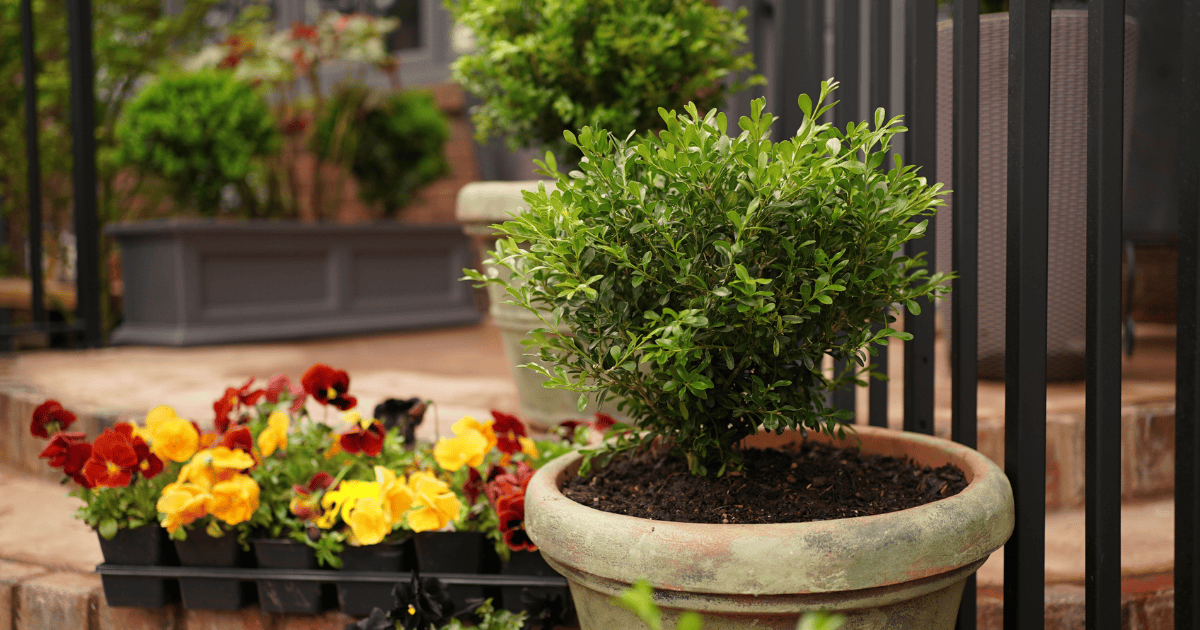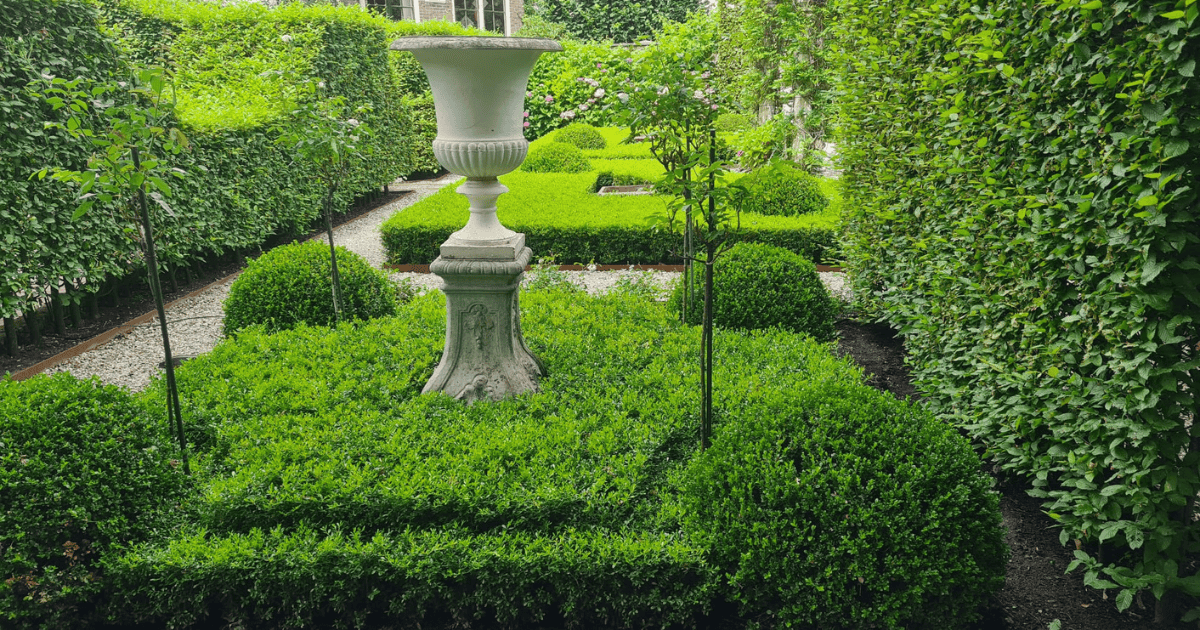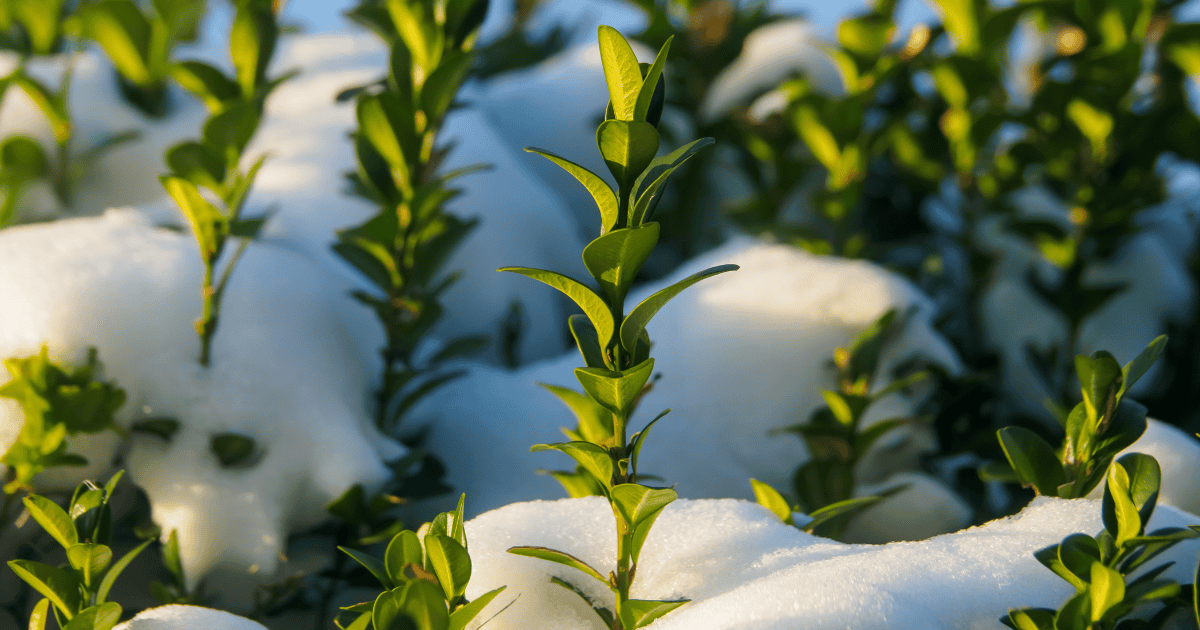
Planting Better Boxwoods in containers is a fantastic way to add year-round greenery and structure to patios, porches, and small garden spaces! We're here to answer all your questions about creating stunning container gardens with boxwoods. From selecting the perfect planters and choosing the right soil to knowing the best time to plant and how often to repot, we’ve got you covered. Let’s dive into everything you need to know to keep your container-grown Better Boxwoods thriving!
How to Select Boxwood Planters and Containers
The right container makes a big difference when it comes to plant health. Selecting a boxwood planter or container involves both aesthetic decisions and functional ones. To some extent, the size of your boxwood plant dictates the container size. Dwarf boxwoods require smaller containers than larger varieties. As a rule of thumb, select a container that is at least as wide as the plant is tall. The reason for this is boxwood plants produce a wide, shallow root system. We want our planting container to be wider than the existing root ball. When potting topiary, it is important to visually balance the container size with the height of the topiary, particularly for boxwoods pruned as a standard, which will look imbalanced if the container is too small.
Drainage is the most important factor when selecting a container. Choose a pot with excellent drainage to prevent root diseases. To enhance drainage, lift containers off the ground using pot feet if they are to be placed on a hard surface such as patio pavers or concrete. Containers set in garden beds can be placed directly on the soil. Avoid using saucers beneath containers, which collect and hold standing water.
Boxwood planters come in all shapes and sizes. Look for materials that enhance your garden or patio aesthetic while also standing up to the elements. If you live in a climate that experiences freezes, look for frost-proof pots and be careful with terra cotta, which can crack in winter. Gardeners in hot climates should avoid very dark colored containers, which heat up from the sun and contribute to heat stress of the roots. Boxwoods can also be planted in concrete or brick planting boxes.

What Type of Potting Soil Do Boxwood Plants Need
Boxwood plants require good drainage to keep roots healthy and disease-free. Select a commercial potting mix designed for containers. Potting mixes contain a mix of ingredients that provide structure, fast drainage, and sufficient moisture retention. When practical, wet the soil mix several hours before potting plants. Do not use garden soil, either bagged or from the garden, as these are too heavy for containers.
When to Plant Boxwood in Containers
Anytime you move a plant from one location to another, whether you are planting in the ground or a container, the plant undergoes a bit of shock and requires time to recover. For this reason, it is best to plant boxwood when temperatures are moderate and environmental stress is at a minimum. Spring is the best time to plant boxwoods in containers. Temperatures are cool, giving plants time to settle into their new home before the stress of summer heat arrives.
Boxwood can also be planted in containers when moderate temperatures return in autumn. An early fall planting allows plant roots time to establish and mature before winter weather arrives. Make sure to keep containers watered even in winter, as soil moisture helps insulate the roots. Wait until spring to fertilize fall-planted boxwood.

How Often Do Boxwoods Need Repotting
Different boxwood varieties grow at different rates, and some may need to be repotted more often than others. As a general rule, repot boxwood shrubs every three years. Move the plant to a container that is one to two sizes larger than its current pot. Loosen the root ball to ensure good contact between the roots and the new potting soil.
Some gardeners like to replant dwarf specimens, topiaries, and boxwoods in the same container to maintain their compact size. To do this, you will need to prune the roots. Make a few cuts into the root ball to create space for additional potting soil to sit. Remove a small amount of the root mass as needed to make it fit into the container. Replace the old potting soil with fresh media.


